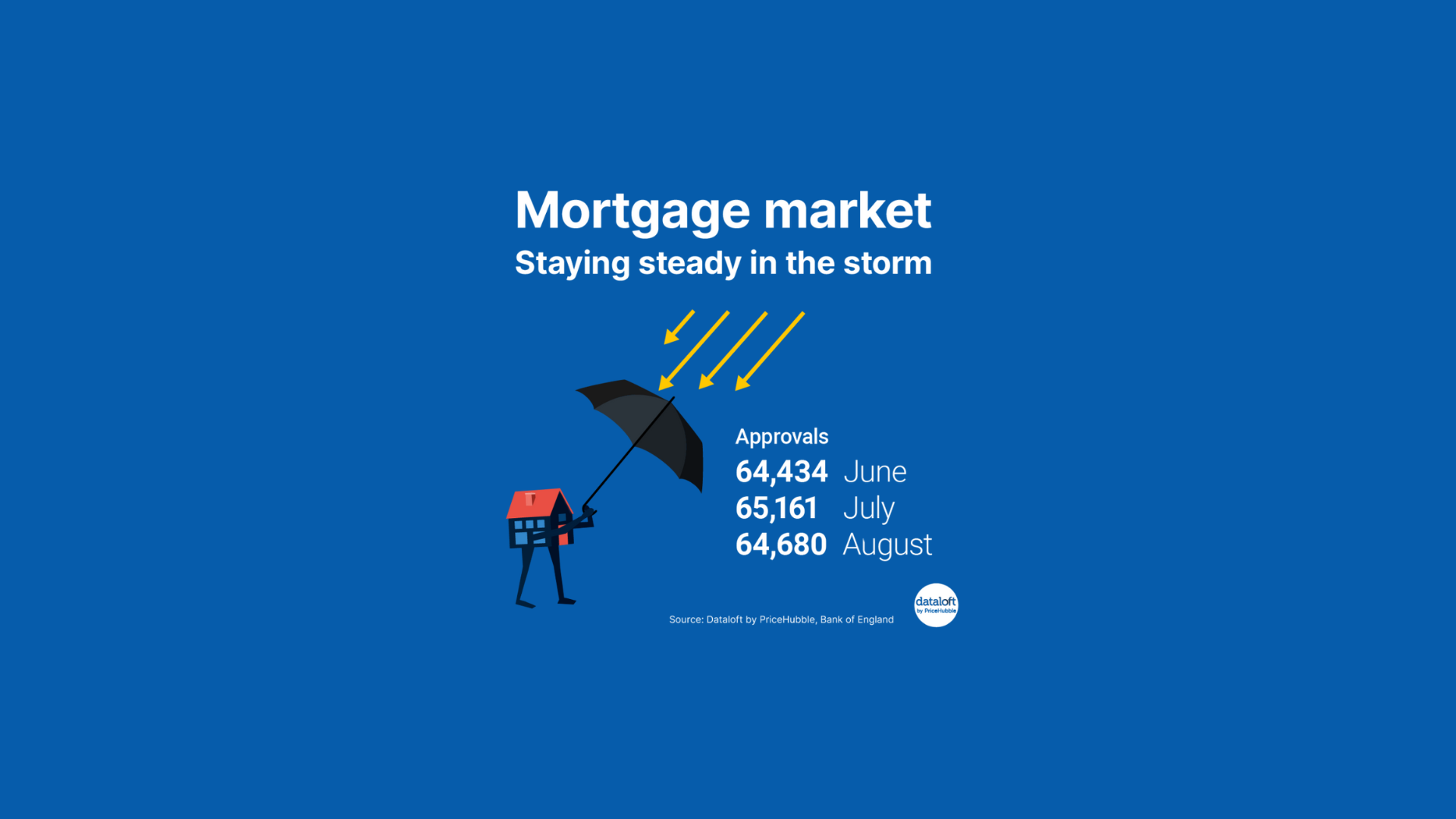
The UK mortgage market continues to show resilience, even as the wider economy wrestles with political uncertainty and fiscal pressures. While many expected the summer to expose cracks, the reality has been far more steady. In August there were 64,680 mortgage approvals, just 0.7 per cent down on July, a modest dip considering that August is traditionally a quieter month in the housing calendar. Over the past three months the fluctuations have been minimal, with approvals shifting by fewer than 1,000 each way. Current levels are broadly in line with those recorded six months ago, suggesting that demand has not only held up but has also settled into a consistent rhythm.

One of the key reasons behind this steadiness is the stability of interest rates. The Bank of England opted to hold rates at its September meeting, a decision that brought reassurance to borrowers and lenders alike. With no sudden increases to contend with, activity has continued at a steady pace. Borrowers appear to have largely adapted to the current rate environment, accepting that the era of rock-bottom mortgages is behind us, but that the market is far from unaffordable. Average mortgage rates have barely moved in recent months, with some lenders even trimming deals at the shorter end, creating fresh competition and nudging two-year fixes below their five-year counterparts for the first time in several years. That kind of competition helps buyers secure more manageable deals, while reinforcing the sense that the market is calm rather than volatile.
Of course, this does not mean there are no headwinds. Many high-end buyers, particularly those looking at properties above the £1 million mark, are taking a cautious stance ahead of the autumn Budget. Concerns over possible tax changes, from stamp duty adjustments to revisions in capital gains treatment, are encouraging some wealthier households to hold fire until the political picture becomes clearer. That wait-and-see approach may cause activity at the upper end of the market to slow in the coming months, with fewer completions and more negotiation over asking prices. This trend is unlikely to derail the overall market, but it may create softer conditions for sellers of prime property and present opportunities for those prepared to move decisively while competition is thinner.
Elsewhere, the picture is more balanced. Buyers in the mainstream market, particularly families and first-timers, remain active, albeit with a more pragmatic approach to affordability. They are choosing carefully, often securing competitive two-year deals with a view to remortgaging when the rate cycle becomes clearer. Sellers, meanwhile, are finding that realistic pricing and well-presented homes continue to attract interest. Agents are observing steady footfall at viewings and a healthy level of offers, even if the frenzied bidding wars of the pandemic years are firmly behind us. For brokers and lenders, the current environment offers a chance to compete on service and efficiency rather than headline-grabbing rates, with speed and certainty proving highly valued by clients who want reassurance in an uncertain world.
The broader takeaway is that the mortgage market is navigating today’s challenges with a surprising degree of composure. It has not escaped pressure, and the top end may cool as buyers pause for political clarity, but the underlying activity remains remarkably consistent. Rates are steady, approvals are holding, and the appetite to transact has not disappeared. For now, the storm clouds of the wider economy have not capsized the mortgage market, which continues to prove a steady vessel in unsettled seas.
Source: Dataloft by PriceHubble, Bank of England
Subscribe to receive the latest property market information to your inbox, full of market knowledge and tips for your home.
You may unsubscribe at any time. See our Privacy Policy.